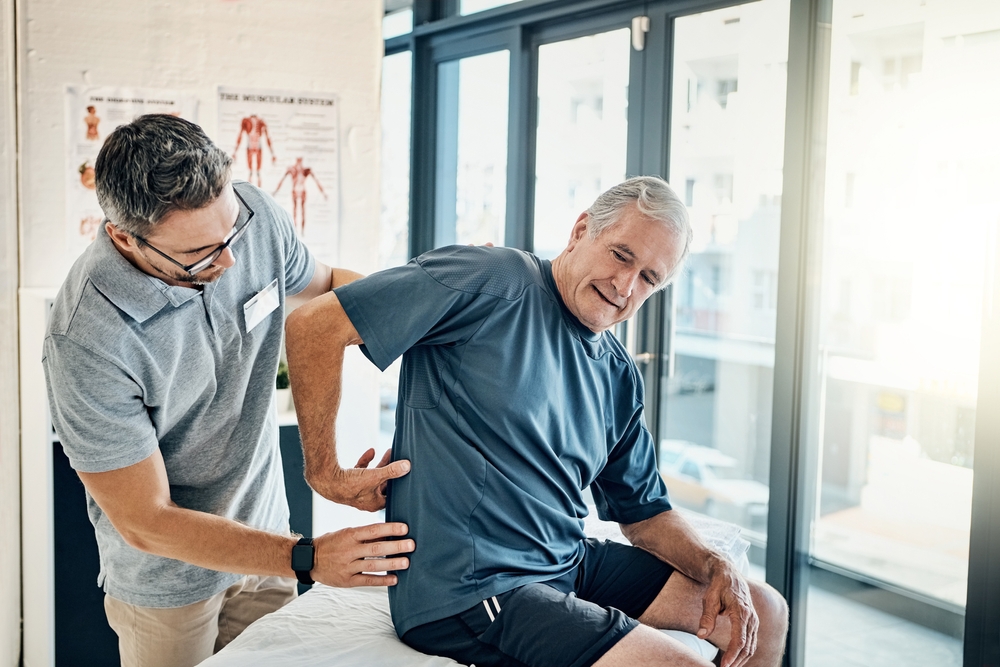
Exercises for Back Pain Relief: Simple Movements for Long-Term Comfort
Back pain is a common issue that affects people of all ages. While there are various treatments for back pain, one of the most effective methods for long-term relief is exercise. At Conroe Family Doctor, Dr. Trang Nguyen emphasizes the importance of movement and strengthening exercises to not only relieve back pain but also prevent it from reoccurring.
1. The Benefits of Exercise for Back Pain
Exercise is a natural way to alleviate back pain by improving flexibility, strength, and posture. When you strengthen the muscles that support the spine, you reduce the risk of injury and help your body maintain proper alignment. Regular movement also increases circulation, promoting the flow of nutrients to the spinal structures and aiding in the healing process.
For patients in Conroe, TX, Dr. Nguyen often recommends starting with gentle exercises, especially if the pain is mild to moderate. It’s important to move within your limits and gradually increase the intensity of your workouts as your pain decreases.
2. Pelvic Tilts
Pelvic tilts are a simple, gentle exercise that can help relieve tension in the lower back and improve flexibility. This exercise helps strengthen the muscles that support the lower back and can alleviate mild pain by engaging the core muscles.
How to Perform Pelvic Tilts:
- Lie on your back with your knees bent and feet flat on the floor.
- Tighten your abdominal muscles and push your lower back into the floor.
- Hold for 5-10 seconds and release.
- Repeat this movement 10-15 times, gradually increasing the number of repetitions as your back becomes stronger.
Pelvic tilts are especially helpful for those dealing with lower back pain due to poor posture or muscle imbalances.
3. Cat-Cow Stretch
The Cat-Cow stretch is a yoga-inspired movement that stretches and strengthens the muscles around the spine. This exercise improves flexibility and mobility in the spine, making it an excellent choice for relieving back pain caused by stiffness.
How to Perform Cat-Cow:
- Start on your hands and knees, with your wrists aligned under your shoulders and your knees under your hips.
- Inhale and arch your back (Cow), lifting your head and tailbone toward the ceiling.
- Exhale and round your back (Cat), tucking your chin to your chest and pulling your belly button toward your spine.
- Continue this movement, flowing between Cat and Cow for 10-15 repetitions.
By moving through this stretch, you can loosen tight back muscles and improve spinal alignment.
4. Knee-to-Chest Stretch
The knee-to-chest stretch is a gentle way to release tension in the lower back and stretch the muscles that run along the spine. This movement is particularly useful for people with lower back pain caused by tight hamstrings or hip flexors.
How to Perform the Knee-to-Chest Stretch:
- Lie on your back with your knees bent and feet flat on the floor.
- Slowly bring one knee up to your chest, holding it with both hands.
- Hold the position for 15-30 seconds, feeling a gentle stretch in your lower back.
- Release and switch to the other leg, repeating the stretch on each side 3-5 times.
This stretch helps to lengthen the lower back muscles and can provide immediate relief for mild pain.
5. Child’s Pose
Child’s Pose is another yoga-based exercise that stretches the back muscles while promoting relaxation. This pose is excellent for relieving tension in the lower back and shoulders, making it a great addition to any back pain relief routine.
How to Perform Child’s Pose:
- Begin on your hands and knees, with your big toes touching and knees spread apart.
- Sit back on your heels and stretch your arms forward, lowering your forehead to the floor.
- Hold this position for 30 seconds to 1 minute, focusing on deep breathing.
- Repeat 3-5 times.
Child’s Pose not only stretches the lower back but also helps to calm the mind, making it an excellent exercise for managing both physical and emotional stress.
6. Bridge Exercise
The bridge exercise is designed to strengthen the glutes, hamstrings, and lower back muscles. By targeting these muscle groups, you can improve stability in the lower back and reduce the likelihood of future pain.
How to Perform the Bridge Exercise:
- Lie on your back with your knees bent and feet flat on the floor, hip-width apart.
- Press your heels into the ground and lift your hips toward the ceiling, forming a straight line from your shoulders to your knees.
- Hold the position for 5-10 seconds and slowly lower your hips back to the ground.
- Repeat 10-15 times, gradually increasing repetitions as your strength improves.
Strengthening the muscles around the lower back provides much-needed support for the spine and reduces strain on this area.
7. Bird Dog Exercise
The Bird Dog exercise is a great way to improve core stability and strengthen both the lower back and abdominal muscles. This exercise challenges your balance while engaging key muscle groups that support the spine.
How to Perform Bird Dog:
- Start on your hands and knees, with your wrists directly under your shoulders and knees under your hips.
- Slowly extend your right arm forward and your left leg back, forming a straight line from your fingers to your toes.
- Hold for 5 seconds, then return to the starting position.
- Repeat on the opposite side, extending your left arm and right leg.
- Perform 10-15 repetitions on each side.
By strengthening the muscles in the core and back, the Bird Dog exercise helps stabilize the spine and reduces the risk of injury.
8. Lower Back Rotation Stretch
The lower back rotation stretch helps to improve flexibility in the spine while relieving tension in the lower back. This exercise is particularly helpful for people with chronic lower back pain.
How to Perform the Lower Back Rotation Stretch:
- Lie on your back with your knees bent and feet flat on the floor.
- Keep your shoulders on the floor as you gently roll both knees to one side, twisting your lower back.
- Hold the stretch for 15-30 seconds and return to the starting position.
- Repeat on the opposite side, performing 3-5 repetitions on each side.
This stretch promotes spinal mobility and can help alleviate stiffness and pain in the lower back.
Moving Forward with Consistent Practice
Incorporating these exercises into your daily routine can significantly reduce back pain and improve overall spine health. Whether you’re dealing with acute pain from a muscle strain or chronic discomfort from a degenerative condition, staying active and strengthening the muscles around the spine is key to long-term relief. At Conroe Family Doctor, Dr. Trang Nguyen encourages patients in Conroe, TX, to make these exercises a regular part of their lifestyle to maintain a healthy, pain-free back.
Sources:
- Qaseem, A., Wilt, T. J., McLean, R. M., & Forciea, M. A. (2017). Noninvasive Treatments for Acute, Subacute, and Chronic Low Back Pain: A Clinical Practice Guideline. Annals of Internal Medicine.
- Shmagel, A., Foley, R., & Ibrahim, H. (2016). Epidemiology of Chronic Low Back Pain in US Adults. Spine.
- Maher, C., Underwood, M., & Buchbinder, R. (2017). Non-specific Low Back Pain. The Lancet.


